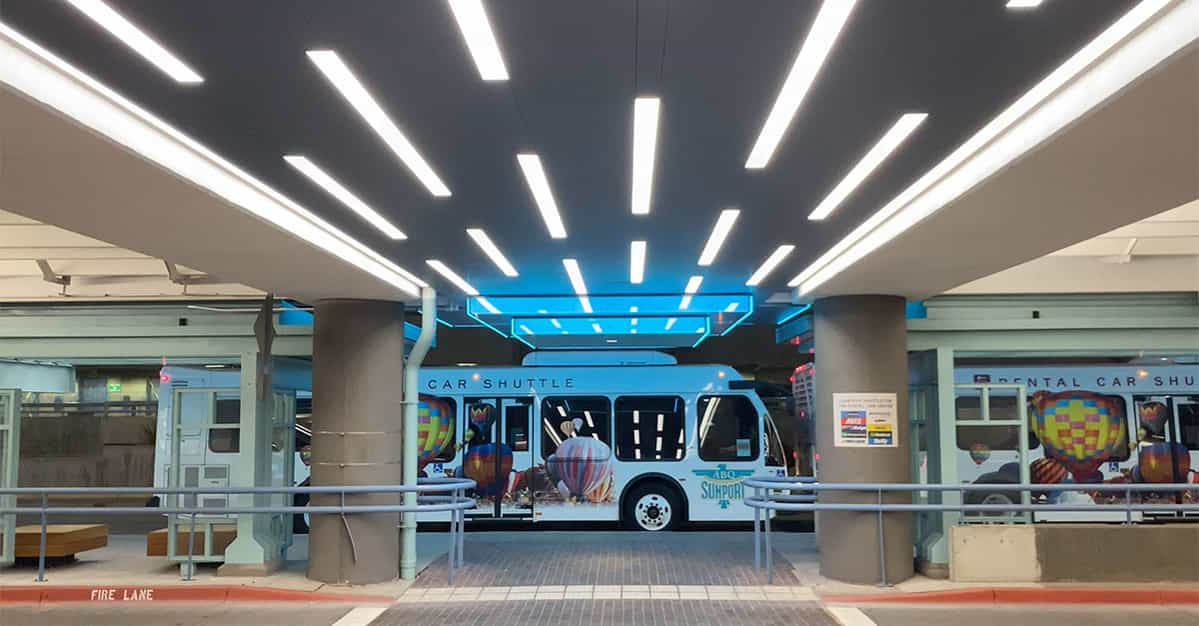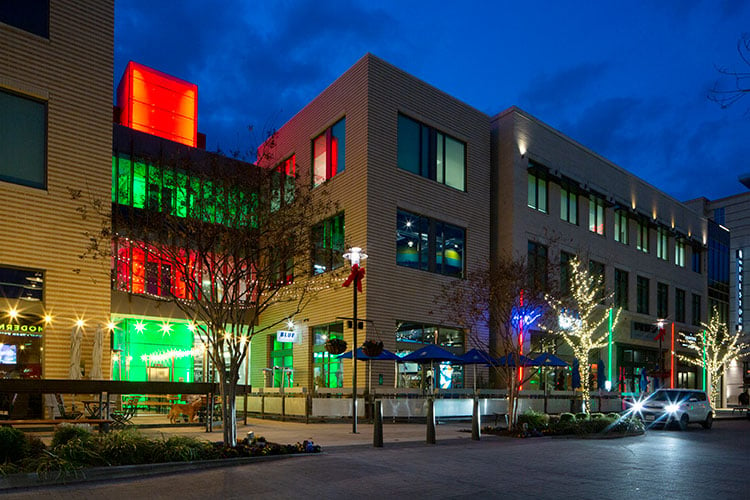Using Light Layers in Architectural Lighting Design
“Light layers” is not a common expression for most people. Google it and you’ll get a lot of search results about hairstyling. For lighting designers, light layering is part of a lexicon we share with architects and interior designers.
Each layer represents a different type of light or lighting technique, commonly referred to as ambient, focal, and accent lighting. I prefer more descriptive terms – ambient, focal, and sparkle light – the Big Three of architectural lighting design.
- Ambient light is the softer, low-intensity light that covers all surfaces in a room – the foundation light layer.
- Focal light highlights architectural and interior design with more intense light to draw the eye to what is most important.
- Sparkle light adds brilliant light and reflections the way flashes from a crystal chandelier add a festive touch to a ballroom
Why Ambient, Focal and Sparkle Light?
Variations of these terms originated with some of the greats in the profession. Lighting designer pioneer Joe Kaplan said to use “lines, dots, and sprinkle a little magic in the corners.”
Richard Kelly was one of the first, if not the first, to transition from architect to full-time lighting designer. He is recognized as the founding father of architectural lighting design,
Richard worked with legendary architects, such as Louis Kahn, on creative lighting designs for architecture such as the Kimball Art Museum in Fort Worth, Texas. He postulated what I think of as the most descriptive terminology – Ambient, Focal, and Play of Brilliants.
The Oldner Big Three
I’m from Texas, and I needed a simpler way to convey the meaning of a “play of brilliants,” so I call it sparkle. When you come to one of my classes on lighting at the University of Texas at Arlington, you will hear my students say out loud and in unison, when prompted, “ambient, focal, and sparkle!”
Understanding these three elements and knowing how to use them is the key to achieving the right emotional timbre that lighting brings to an architectural space.
Sparkle is the most powerful tool. We are drawn to it. We love it. It heightens the emotional content of the space.
Richard Kelly said it is the relative amount of each of the three elements that creates the emotion. So, it seems we lighting designers determine what we want you to feel, whether that be relaxed, energetic, or reverent. Let’s take a closer look.
AMBIENT LIGHT

Ambient light, like ambient music, is usually soft, subtle and in the background. It bathes all surfaces of the room with an even, low level light layer.
There is a wide variety of ambient lighting sources. A grid pattern of downlights, whether six-inch round fixtures or 2x2-foot square fixtures if frequently used.
A soft decorative pendant hanging in the middle of the room also works well, as can a surface mounted decorative fixture in the middle of a bedroom. Cove lighting provides ambient light, and yes, even that light kit hanging from your ceiling fan can do the job.
Ambient light is meant to just be, not to steer your attention in any particular direction, but in all directions.
 |
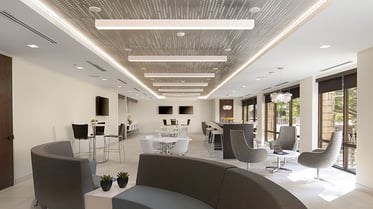 |
FOCAL LIGHT

Focal light, on the other hand, provides the bright light. It steers your attention to objects, items, architectural, interior design, or landscape elements we want you to see.
Remember, our human visual system is like a bug’s in that we are drawn to the light. We see the brightest spot in the space first, then the next brightest, and so on.
All lighting designers must first define the visual hierarchy. That means that we determine which elements in the visual environment are the most important and should be seen first.
In addition to being drawn to light, our eyes are drawn to brightness contrast, color contrast and movement. Brightness contrast is the lighting designer’s #1 job.
Focal Lighting puts more light on an object, but how much should we use? Studies from the Illuminating Engineering Society have found that we don’t see contrast ratios of 3 to 1 or less. That means with an ambient light level of 20 footcandles, we may not notice an object if we put only 40 footcandles on it.
The IES rule calls for at least a 4-to-1 ratio to make people notice the element. Better yet, a 10-to-1 ratio makes the featured element really noticeable and certain to attract our attention.
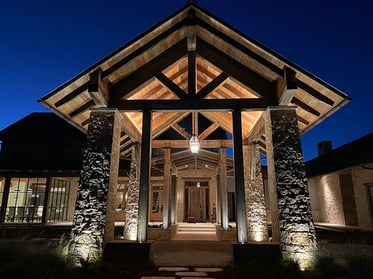 |
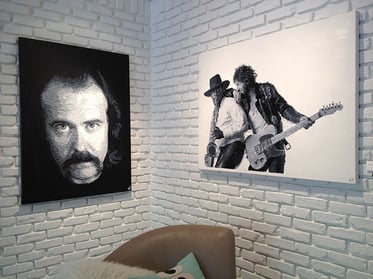 |
Focal lighting, more times than not, employs a fixture that can vary the beam spread to allow for installation and aiming flexibility. This makes it easier to beam the light precisely where it is needed when we do the final aiming.
There is a myriad of other fixture types available, too, such as recessed adjustables, track, mono-point or even linear. Really, any light fixture that has multiple beam spread choices can be used to highlight the art or the elements of design.
Usually, fixtures that don’t have beam spreads are more suitable for ambient lighting. However, we still can use them in ways that create focus, as long as the contrast ratios exceed the 4-to-1, minimum necessary to create contrast.
SPARKLE
Ahh yes, the amazing sparkle light! Sparkle is a small dot of brightness, such as you get from a diamond ring, crystal chandelier, or glassware. In nature, we see sparkle in the sun dancing off of the water or icicles hanging from a roof.
Sparkle is the most powerful tool. We are drawn to it. We love it. It heightens the emotional content of the space. We pay extra for the right amount of sparkle in our lives, but too much sparkle can be overwhelming, cluttering, and distracting.
All hospitality spaces should have a bit of sparkle to make them special. Think of sparkle light like spices for a meal. If you have no pepper or salt on your dinner plate, it can be somewhat satisfying, but boring.
Adding a bit of salt and pepper elevates the flavor and enhances the enjoyment. But be careful. Too much salt can ruin the experience. Too much sparkle light can, too.
 |
 |
My favorite sparkle techniques are the lighting of glass, decorative lighting, and small 3/4” recessed, 1w LED fixtures.
THE LIGHT LAYER MIX
The Big Three are fundamental, but sometimes we only need two lighting elements. For example, a crystal chandelier is very sparkly, but it also provides some ambient light.
Likewise, focal lighting techniques also can create the necessary ambient light if there are enough lighted focal elements in a space. It takes three or four lighting techniques to make a space visually interesting, so mix it up with three or four techniques in different spaces to elevate the experience.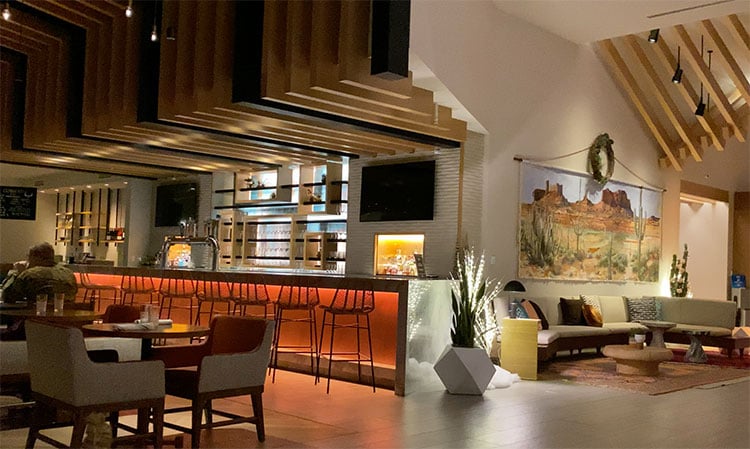
CONCLUSION
Lighting designers use light layers to highlight the work of architects and interior designers and bring the emotional impact that sets the desired mood for the space.
- Ambient light is the basic lighting layer that bathes every surface of a room in soft, low-intensity light for safety and navigation.
- Focal light draws attention to the most important features with focused light that is at least four times brighter than the ambient light.
- Sparkle light adds excitement with brilliant pinpoints of light and reflections, like a sparkling diamond.
Our eyes are drawn to light, as well as to brightness contrast, color contrast and movement. Lighting designers use this knowledge to set the emotional tone of a space, whether relaxed, energetic, or reverent.
Learn more about how interior lighting design for mood uses light layers and other techniques to bring emotional impact to architectural space.
